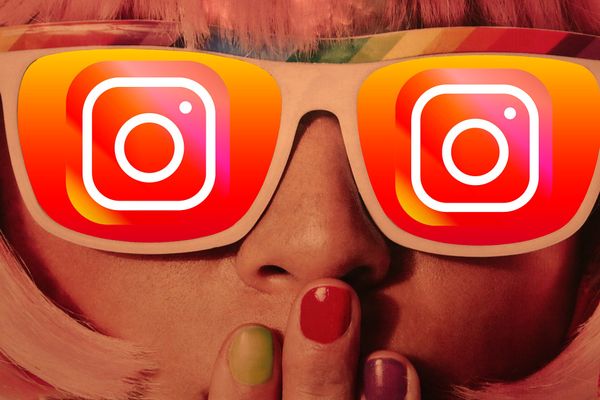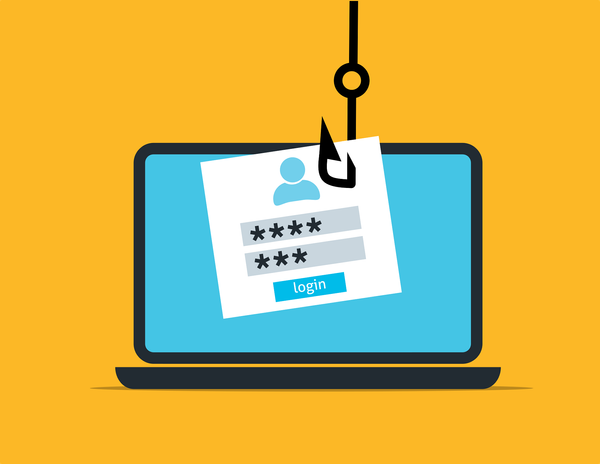5 Instagram scams exposed. How to protect yourself

With 2.4 billion active users as of 2024, Instagram has solidified its position as one of the top five social networking platforms worldwide, with a user base that represents approximately one-fourth of the world's active internet users each month.
This impressive reach has not gone unnoticed by unscrupulous individuals seeking to exploit the platform for their nefarious gains. They constantly try to hijack the platform's popularity and features to perpetrate a myriad of scams.
The landscape of Instagram scams is vast and ever-evolving, ranging from classic phishing schemes to fake job postings, lottery and giveaway scams, cryptocurrency cons, romance swindles, and bogus investment opportunities. All plots prey on human emotions, leveraging our desires for well-being, love, and success to lure unsuspecting victims into their traps.
However, some specific scams are placed here because many celebrities and businesses visually promote their services and products on Instagram and scammers can easily impersonate them.
In this article, we will delve deep into Instagram-specific scams, expose the tactics employed by these digital con artists, and equip you with the knowledge necessary to navigate the platform safely. We aim to empower you to reclaim your digital power and enjoy authentic connections and experiences by shining a light on these insidious schemes.
Instagram-specific scams to stay away from
- Fake Influencer scam
Scammers often pretend to be influencers offering services, "coaching," or products to people.
They do this in two main ways:
1. Creating a completely fake influencer profile from scratch, using stock photos and making up details to seem like a legitimate influencer.
2. Impersonating real creators by shamelessly copying and pasting their profiles, photos, and content one by one onto a duplicate account. Once they have established this fraudulent influencer persona, they will then reach out to people directly, pretending to be that creator or influencer. They "offer" services like sponsored content, merchandise, coaching programs, or product promotions.
Spot the signs:
- Huge number of followers and likes, likely purchased or created by bots.
- Accounts with usernames very similar to the real creator's handle, often with slight misspellings or additions
- Duplicate photos, bios, and other content directly copied from the authentic account
- Unsolicited offers or promotions that the real creator has not officially advertised
- Promotion of shady investment schemes, money-making opportunities, or financial services.
How it works:
- You get a follow or direct message from an account that looks popular and legitimate, posing as an expert in a domain.
- They try to convince you to buy something from them – a service, a product, training or offer you lucrative cryptocurrency, forex trading, real estate, or other "can't miss" investment deals.
Did you know?
According to Statista, on average, 49 percent of Instagram influencers were involved in fraudulently inflating follower count.
2. Brand ambassador scams
Some scammers pose as fake brand accounts. They contact people promising lucrative advertising deals and opportunities to become a "brand ambassador." In some cases, these scams may even promise free or discounted trips, supposedly for in-person meetings or photo shoots related to the fake sponsorship deal.
However, these are merely ploys to steal your personal and financial data.
Spot the signs:
- You receive direct messages from accounts claiming to represent well-known brands.
- These messages offer to pay you for promoting their products or services on your Instagram.
- They request your personal information, such as contact details or banking information.
- They offer opportunities to sign up as an "ambassador" or "influencer" for their brand
How it works:
- Scammers create fake accounts impersonating genuine brands or companies.
- If you have a decent number of Instagram followers, they approach you with an exclusive "sponsorship" opportunity to advertise for their supposed brand.
- They might promise to fly you to an exciting location, put you in a luxurious hotel, and even provide a fictitious itinerary to make it seem legitimate.
- Before the "partnership" can begin, they ask you to cover upfront costs, such as travel expenses, under the pretense of meeting their team.
- They assure you these costs will be reimbursed after you feature their product or service on your Instagram posts.
- In some cases, they may even offer a "sign-on bonus" to further entice you, but they will require your banking details to process the payment
3. Fake product/shop scams
Instagram has a shopping feature that allows businesses to advertise and sell products. Unfortunately, scammers exploit this by creating fake seller accounts. Shopping scams also include ads and posts about counterfeit products, links to phishing websites, and requests for personal information.
Spot the signs
- Accounts with a large following but low engagement or inconsistent posting history.
- Extremely discounted prices or deals
- Links leading to suspicious or unfamiliar websites instead of trusted online stores.
- Accounts without a blue verification checkmark
How the scam works
- Scammers pretend to be legitimate brand accounts, offering exclusive deals and discounts on luxury items.
- They often have many fake followers to make themselves seem more credible.
- These scam accounts will post edited photos of products using Photoshop to make them appear appealing in their ads. They also tend to include text directly in their images rather than sharing information through regular posts or stories.
- Customers may "order" products online but never receive them. Others may receive low-quality goods or complete knock-offs.
4. Paid subscription scams
If targeted, you may be offered discounted prices in these scams for popular subscription services like Netflix, Spotify, and Xbox Live.
Spot the signs:
- Too good to true deals
- Time-limited promotions
- Request for full payment upfront
How it works:
- You come across an Instagram post, story, or advertisement claiming to provide discount codes or lifetime subscriptions to a service you regularly pay for at extremely low prices.
- Excited by the prospect of saving money, you reach out to the scammer, often through direct messages or a link in their bio.
- The scammer will ask for a one-time upfront payment, claiming this will unlock the lifetime or steeply discounted subscription. The payment request is usually for the full amount upfront rather than a monthly fee.
- After you pay, they disappear.
5. Blackmail scams
In this scheme, scammers may try to blackmail you, claiming they have your data or access to your account and asking for money.
Spot the signs:
- You receive intimidating messages threatening to expose your private information or sensitive data.
- The scammer demands payment, often in the form of untraceable cryptocurrency or gift cards.
- They claim to have gained unauthorized access to your files or accounts, using fear tactics to heighten the perceived risk.
How it works:
- The scammer initiates contact, often through direct messages or comments on your posts.
- They threaten to release your information or to lock you out of your account if you don't pay.
- To substantiate their claims, they may provide seemingly convincing evidence, such as personal details or snippets of information obtained through data breaches or social engineering tactics.
It's important to note that in many cases, these blackmailers may not possess any of the information they claim to have. Their strategy relies on psychological manipulation and scare tactics, aiming to coerce you into complying with their demands out of sheer panic.
Related: Ukrainian Hackers Who Stole 100 Million Instagram Accounts Face 15 Years in Prison
How to stay safe on Instagram
Look for the Verification Badge: If an account claims to be an influencer or brand, look for the blue verification checkmark next to their name. Accounts without this badge are likely scams.
Beware of Third-Party Apps: Some third-party apps may request access to your Instagram account. Before granting permission, thoroughly research the app's legitimacy, as some apps could be harvesting and selling your data without your knowledge.
Shop from Verified Accounts Only: Only make purchases from verified accounts with the blue checkmark to stay safe.
Make Your Account Private: Keeping your Instagram account private ensures that only users you approve can view your content. To enable this feature, go to "Settings," select "Privacy," and turn on the "Private Account" option.
Monitor Login Activity: If you suspect your account has been compromised, click "Settings" and "Login Activity." This page lists all the locations where your account has been accessed. If you notice unfamiliar locations, someone else may log in without your knowledge.
Verify Suspicious Messages and URLs
- If someone you know sends a strange or suspicious message, contact them directly through other channels, such as phone calls or in-person conversations. Ask them if they indeed sent the message. A scammer may be impersonating them and targeting you along with other people they know.
- If a stranger or "influencer" sends you a message, check it with Scamio.
Scamio is an AI-powered tool dedicated to helping you identify and avoid potential scams. When you are unsure about an account, offer or link, you can check with Scamio on your web browser or Facebook Messenger. Simply provide a description of the situation, upload an image, and send a link, text or QR code.
Once Scamio confirms it is a scam, you should block and report the account. By doing so, you will protect yourself and help Instagram stop these accounts from scamming anyone else.
tags
Author
Cristina is a freelance writer and a mother of two living in Denmark. Her 15 years experience in communication includes developing content for tv, online, mobile apps, and a chatbot.
View all postsRight now Top posts
How to Protect Your WhatsApp from Hackers and Scammers – 8 Key Settings and Best Practices
April 03, 2025
Outpacing Cyberthreats: Bitdefender Together with Scuderia Ferrari HP in 2025
March 12, 2025
Streamjacking Scams On YouTube Leverage CS2 Pro Player Championships to Defraud Gamers
February 20, 2025
How to Identify and Protect Yourself from Gaming Laptop Scams
February 11, 2025
FOLLOW US ON SOCIAL MEDIA
You might also like
Bookmarks







